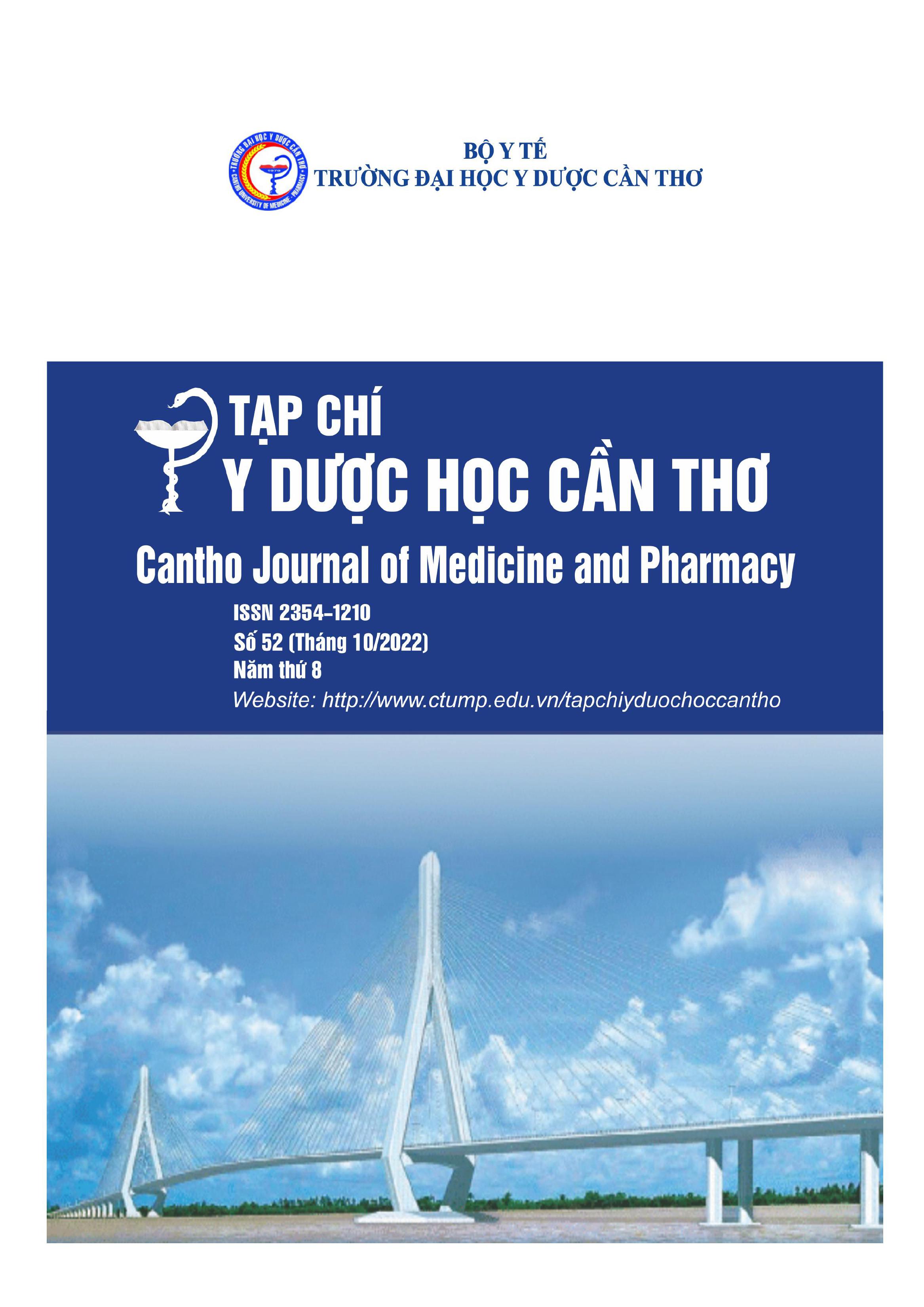THE STUDY ON CHARACTERISTICS OF PATIENTS IN STABLE CHRONIC OBSTRUCTIVE PULMONARY DISEASE TREATED WITH LONG-ACTING MUSCARINIC ANTAGONISTS MONOTHERAPY IN THE CAN THO UNIVERSITY OF MEDICINE AND PHARMACY HOSPITAL
Main Article Content
Abstract
Background: The number of pharmacological agents and guidelines available for chronic obstructive pulmonary disease (COPD) has increased markedly. Patients’ characteristics used to guide treatment decisions are dominated by symptoms, exacerbation history, the value of blood eosinophil and lung function. Objectives: This study aimed to characterize patients with chronic obstructive pulmonary disease who are treated with long-acting muscarinic antagonists (LAMAs) in the Can Tho University of Medicine and Pharmacy Hospital. Materials and methods: We carried out a cross-sectional study including 36 patients with COPD treated with LAMA monotherapy in the Can Tho University of Medicine and Pharmacy Hospital. Results: Males were 100%. Patients with smoking history ≥20 pack-year were 83.3%, 75% of patients had mMRC 2-4. There were 50% of patients with a high risk of exacerbation. GOLD group distribution in cases was 11.1% A, 41.7% B, 11.1% C and 36.1% D. The percentage of patients with eosinophils ≥ 2% was 64.7%. The combined restrictive obstructive lung disorder was about 33.3%. The FEV1 post-bronchodilator ≥50% was 66.7%. Conclusion: Males were 100%, 75% of patients had mMRC 2-4, group B takes the highest percentage, and the FEV1 ≥ 50% was 66.7%.
Article Details
Keywords
Chronic obstructive pulmonary disease, long-acting muscarinic antagonists, pulmonary disorder
References
2. Nguyễn Thị Thu Thảo (2021), Nghiên cứu đặc điểm một số kiểu hình và kết quả điều trị bệnh nhân bệnh phổi tắc nghẽn mạn tính ngoài đợt cấp có chỉ định kháng viêm đường hít tại Bệnh viện Trường Đại học Y Dược Cần Thơ và Bệnh viện Hoàn Mỹ Cửu Long năm 2020-2021, Luận văn chuyên khoa cấp II, trường Đại học Y Dược Cần Thơ, Cần Thơ.
3. Bùi Xuân Trà (2019), Nghiên cứu đặc điểm lâm sàng, cận lâm sàng và đánh giá kết quả điều trị bệnh nhân có hội chứng chồng lấp bệnh phổi tắc nghẽn mạn tính và dãn phế quản nhập viện năm 2017-2019, Luận văn Bác sĩ Nội trú, Trường Đại học Y Dược Cần Thơ, Cần Thơ.
4. Chan M C (2020), “Blood Eosinophil and Risk of Exacerbation in Chronic Obstructive Pulmonary Disease Patients: A Retrospective Cohort Analysis”, 15(3), pp. 2869-2877.
5. Hahn B, Stanford R H., Goolsby H A, et al (2019), Patient-Reported Burden of Illness in a Prevalent COPD Population Treated with Long-Acting Muscarinic Antagonist Monotherapy: A Claims-Linked Patient Survey Study, Pulmonary Therapy, 5(1), pp. 69-80.
6. McGarvey L, Lee A J, Roberts J, et al (2015), Characterisation of the frequent exacerbator phenotype in COPD patients in a large UK primary care population, Respir Med, 109(2), pp. 228-237.
7. Monteagudo M, Roset M, Rodriguez-Blanco T, et al (2017), Characteristics of COPD patients initiating treatment with aclidinium or tiotropium in primary care in Catalonia: a populationbased study, Int J Chron Obstruct Pulmon Dis, 12, pp. 1145-1152.
8. Roche N (2019), Are there specific clinical characteristics associated with physician’s treatment choices in COPD?, Respiratory Research, 20(1), pp. 189-191.
9. Suissa S, Dell'Aniello S.,Ernst P. (2021), Comparative Effectiveness of Initial LAMA versus LABA in COPD: Real-World Cohort Study, COPD: Journal of Chronic Obstructive Pulmonary Disease 18(1), pp. 1-8.
10. Zhang J (2021), Secondary polycythemia in chronic obstructive pulmonary disease: prevalence and risk factors, BMC Pulmonary Medicine, 21(1), pp. 235-237.


